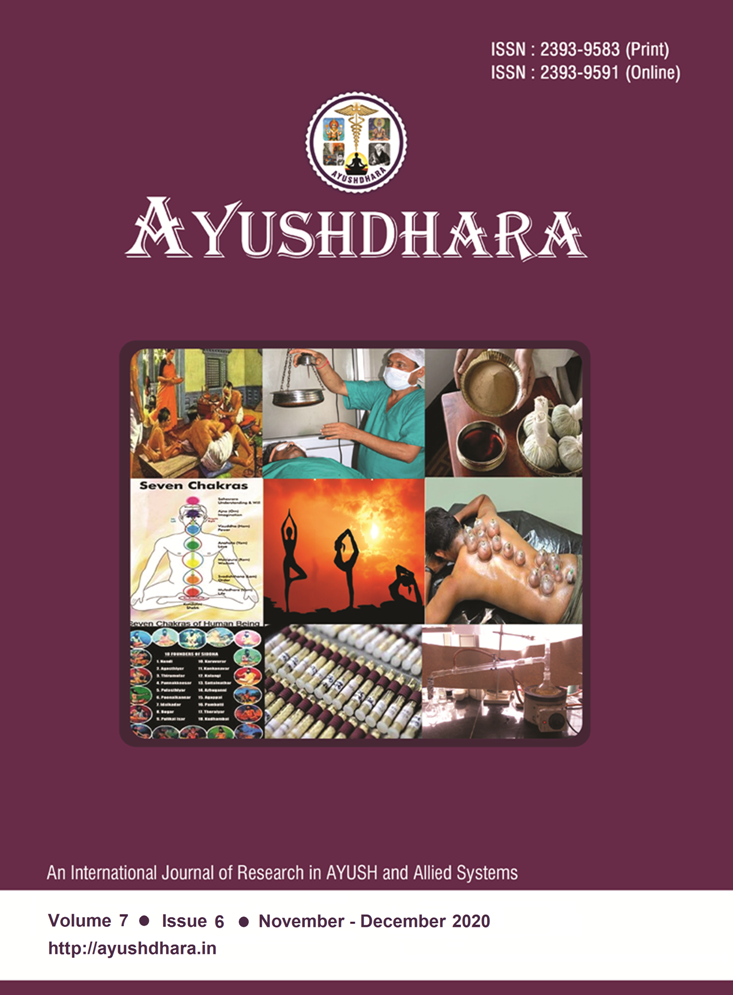A COMPARATIVE CLINICAL STUDY OF ASWAGANDHA KSHARA IN THE MANAGEMENT OF KAPHAJA KASA
Abstract
Kaphaja Kasa is most prevalent disorder of Pranavaha Srotas, if not treated properly; it can lead to serious diseases like Swasa, Kshaya etc. The cordial symptoms of Kaphaja kasa are Kasa, Pinasa, Kaphasteevana, Jvara, Prabhutaghana, Snigdha and Bahala kapha. It is equivalent to acute and chronic bronchitis in modern medicine is an airway inflammatory disorder. Aswagandha is a miracle and very common plant drug in our country mainly used in Ayurveda for different disease conditions and also as a preventive medicine. The method adopted in present study is randomized open label clinical trial before and after the treatment. A randomized clinical study was conducted on 30 patients with Aswagandhakshara prepared from different plant parts, patients were divided into three groups, each group consisting of 10 patients. In all subjects, history taking, clinical examination and laboratory investigations were done as per the case sheet proforma advocated by CCRAS, Kshara prepared from aerial parts shows extremely significant results on Kaphasteevana, Pinasa, Eosinophils, ESR level, very significant results in Jvara, TC, and ESR level, Kshara prepared from roots and aerial parts shown extremely significant result on Pinasa and ESR level, very significant results on Kasa, Kaphasteevana, Eosinophils and Kshara prepared from roots has shown very significant result on ESR level. The overall result showed that the medicine was effective in patients who were administered Kshara prepared from aerial parts.
Downloads

Published
How to Cite
Issue
Section

This work is licensed under a Creative Commons Attribution-NonCommercial-ShareAlike 4.0 International License.



